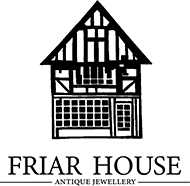The History of Cufflinks
Cufflinks first appeared in the 1600s but did not become popular until the end of the 18th century.
Their introduction is linked to men's shirts and replaced the ribbons and ties that had been used to hold cuffs together. Men have been wearing shirt-like items of clothing since the invention of woven fabric in 5,000 years BC.
In the early 19th century the new employed classes wore a conventional wardrobe of a dark suit by day and a dinner jacket or tailcoat in the evening.
By the middle of the 19th century the modern cufflink became popular. The shirt front as well as the collar and cuffs, the area of most wear were made sturdier. This was practical, but when cleaned and starched, collars and cuffs could be too stiff to secure the cuffs with a simple button.
Consequently, from the mid-19th century onward, men in the middle and upper classes wore cufflinks. The industrial revolution meant that these could be mass-produced, making them available in every price category.
This development continued into the early 1900s, with more cufflinks worn than ever before. These were available in every form, colour and material, incorporating both gemstones and less precious stones and even glass in the cheaper copies.

Intricate coloured enamelled cufflinks in a wide variety of geometric patterns were especially popular.
A sportier style of shirt then emerged with unstarched cuffs that could be secured with simple buttons. In the 1970s, cufflinks were less of a fashion statement when shirts were primarily being manufactured complete with buttons and buttonholes.
The 1980s saw a revival of traditional cufflinks, as part of a general trend in traditional male dress which has more or less continued to this day.
What are Cufflinks?
Cufflinks are usually secured by toggles which can be folded into position. There are other variations with chains or a rigid, bent rear section.
The front sections of the cufflinks will often be decorated with gemstones, inlays, engraving, or enamel and designed in two or three-dimensional form.
Cufflinks are designed only for use with shirts which have cuffs with buttonholes on both sides, but no buttons. These may be either single or double-length known as French cuffs.
Links of knotted brightly coloured silk became popular again in the 1990s and these are joined by an elasticated section.
Fabric cufflinks
An alternative type of cufflink the cheaper silk knot is usually two conjoined Turk's head knots. The Paris shirt maker Charvet is credited with their introduction in 1904. French cuff shirts are often accompanied with a set of colour-coordinated silk knots instead of double-button cufflinks. They are now often not made from silk, but of a fabric over an elasticated core. Due to the popularity of this fashion, metal cufflinks shaped to look like a silk knot are also worn.
Motif
The visible part of a cufflink is often monogrammed or decorated in some way, such as with a birthstone or something which reflecting a hobby or association. There are numerous styles including novelty, traditional, or contemporary.

Cufflinks can and have been worn with informal wear, business suits, and dressier styles such as semi-formal black tie and formal wear - morning dress or white tie, where they become essential and can be matched with shirt studs.

Colourful and whimsical cufflink designs are usually only suitable for casual and relatively informal events. Formal wear has stricter expectations, with pearl cufflinks being preferred for white tie events. Traditionally it was considered important to coordinate the metal of the cufflinks with other jewellery being worn such as the watch case, belt-buckle, tie bar or rings.





